Abstract
1. Fibre sodium in rat diaphragm exchanged at a faster rate in muscles which had been denervated 8 days previously. The half-time was 3·7 min for outward movement in denervated muscles and 5·1 min in controls.
2. The inward movement of sodium was also faster in denervated muscle as compared with controls, and the calculated permeability to sodium was approximately doubled.
3. In the presence of antimycin A (1·8 × 10-5 M), the outward movement of sodium in denervated diaphragm was slowed and the fibres gained sodium and lost potassium.
4. Antimycin markedly reduced the twitch produced by stimulation of denervated diaphragm, and also the response to acetylcholine. Similar effects were found in denervated tibialis anterior of the cat.
Full text
PDF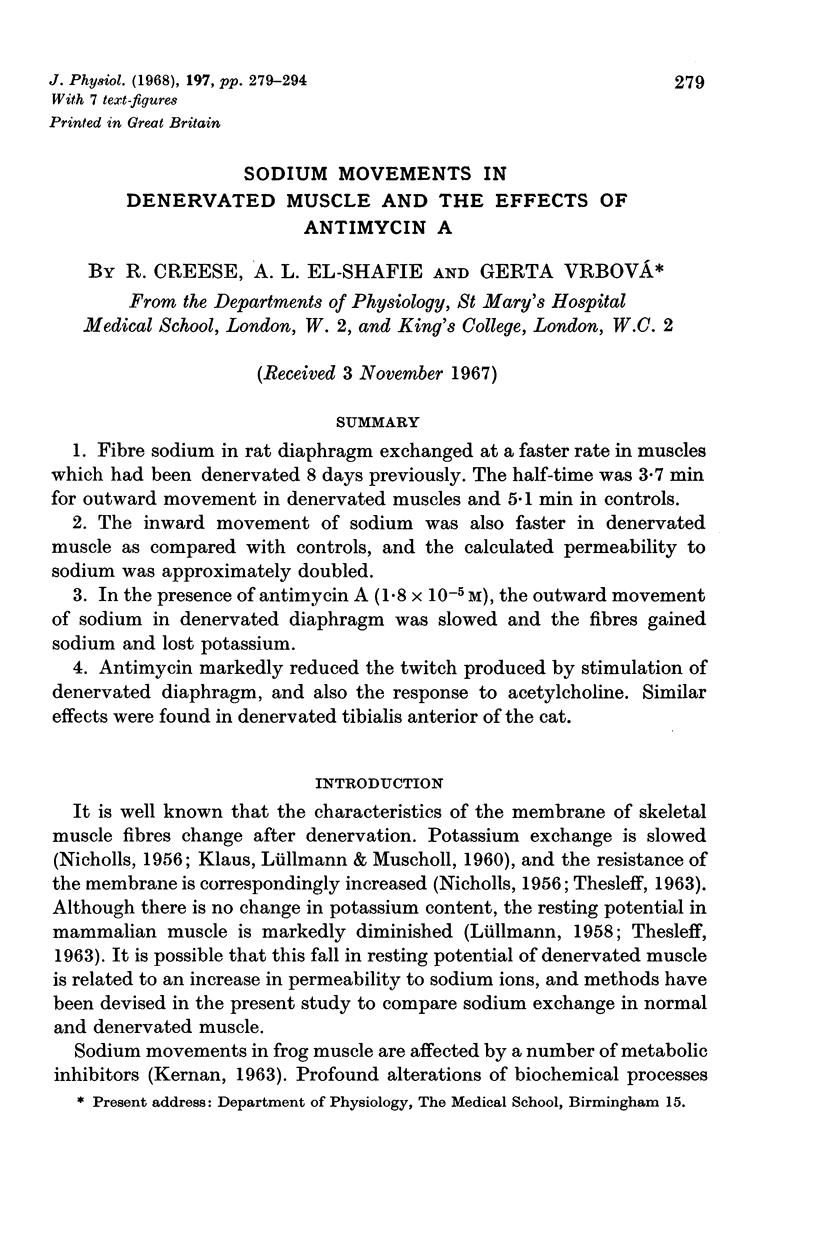
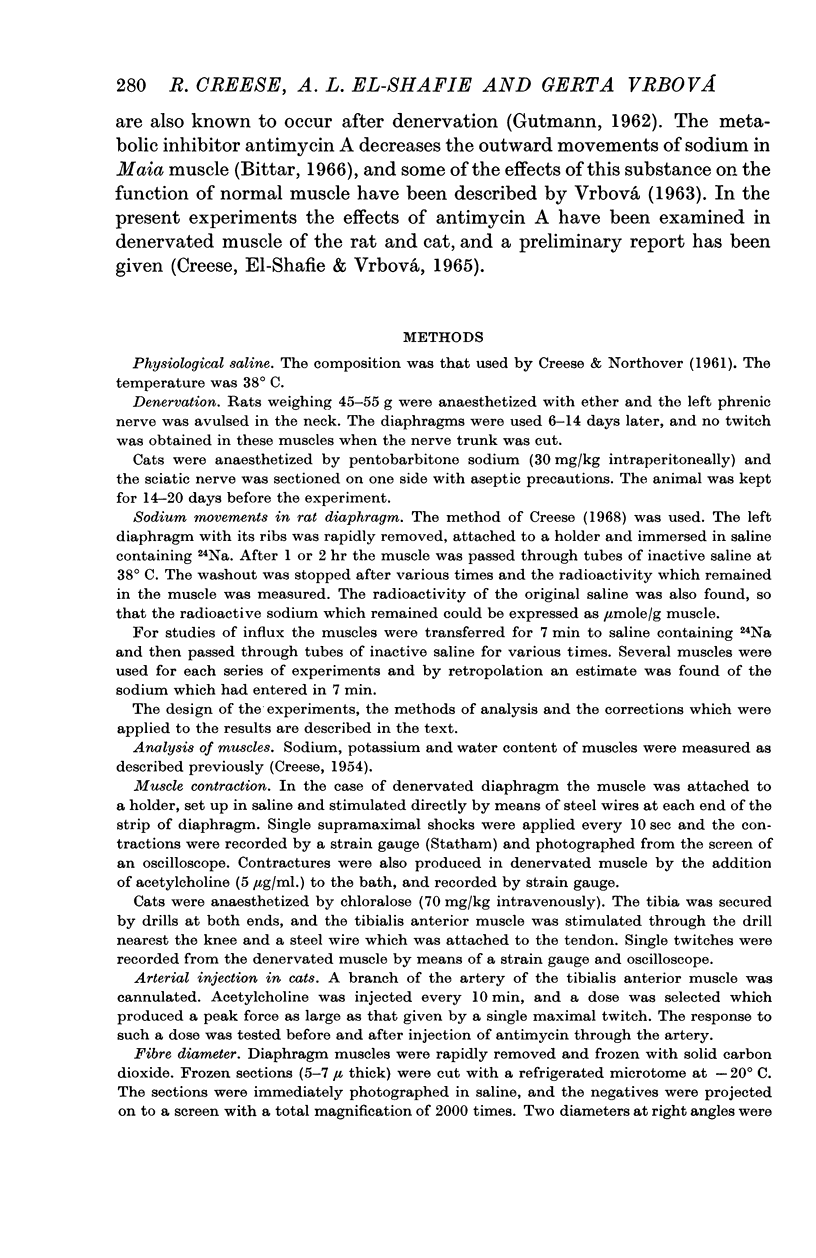
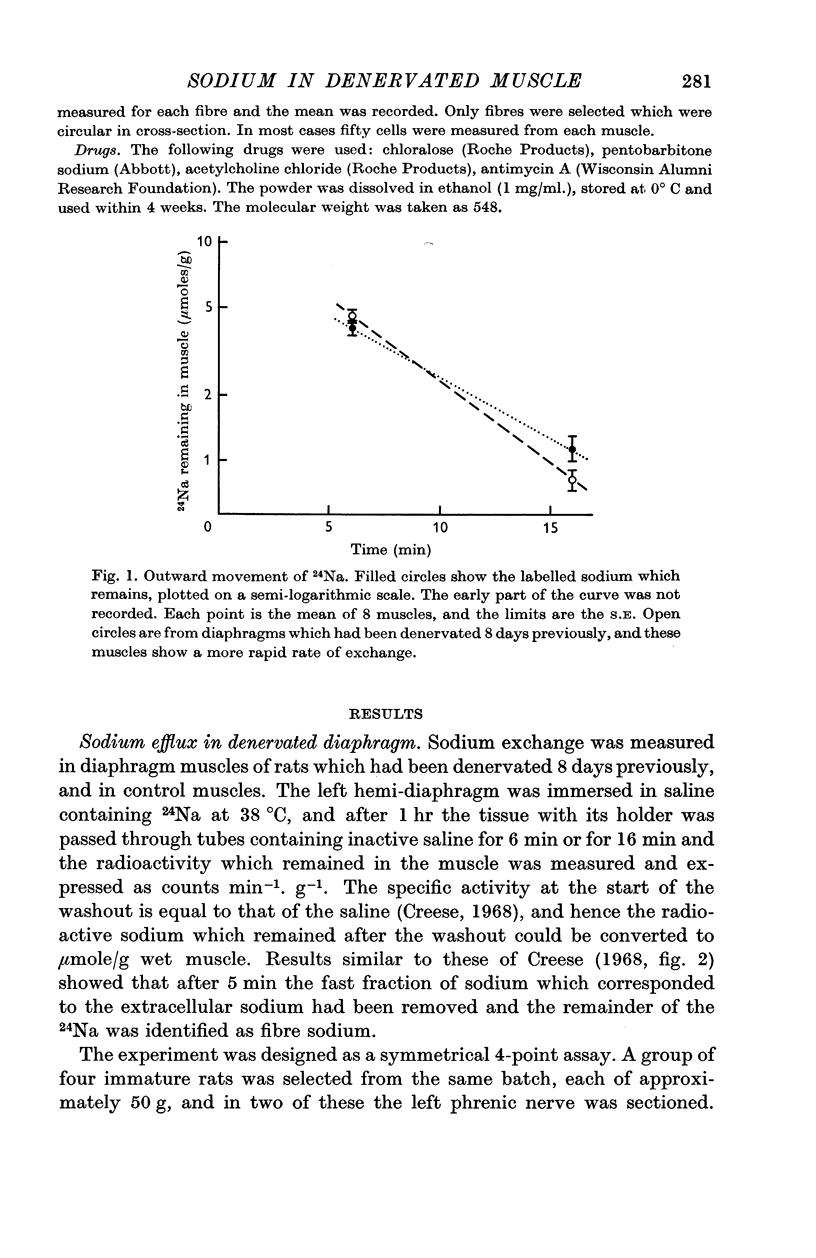
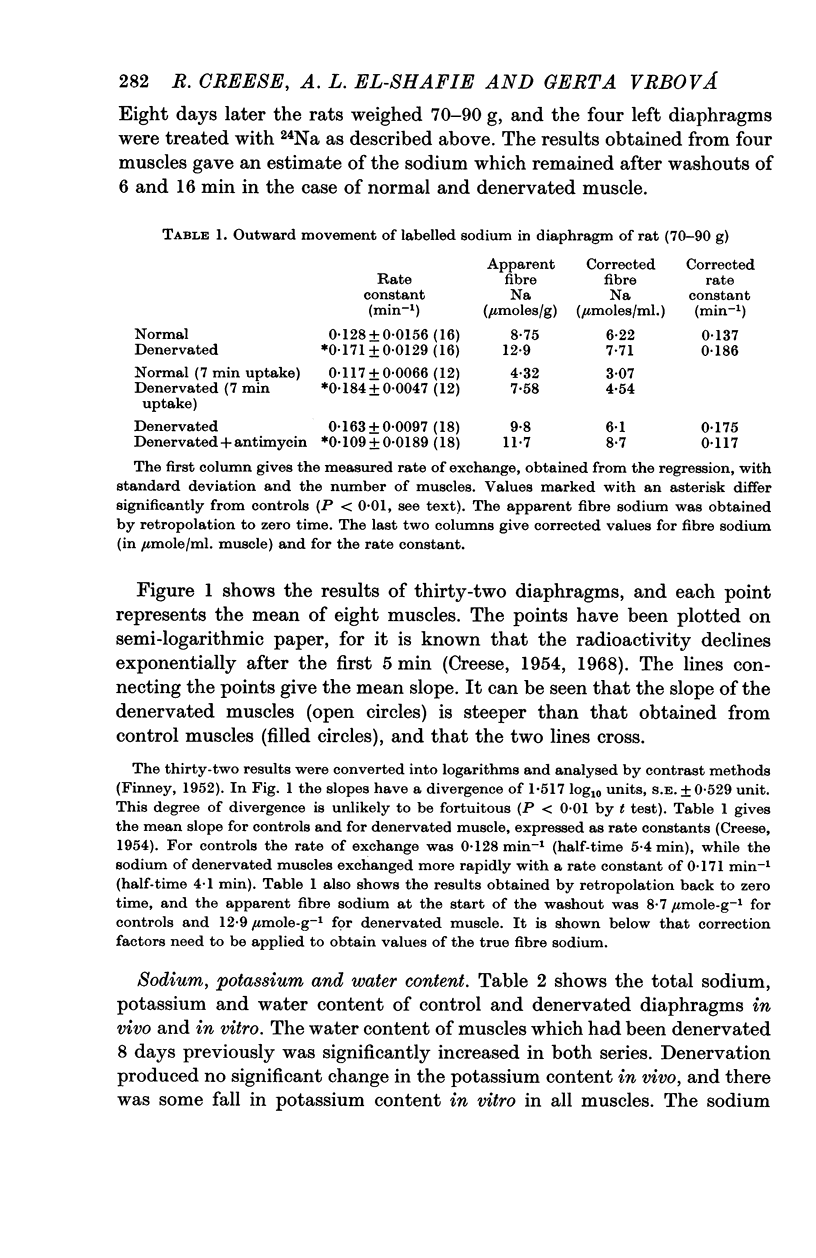
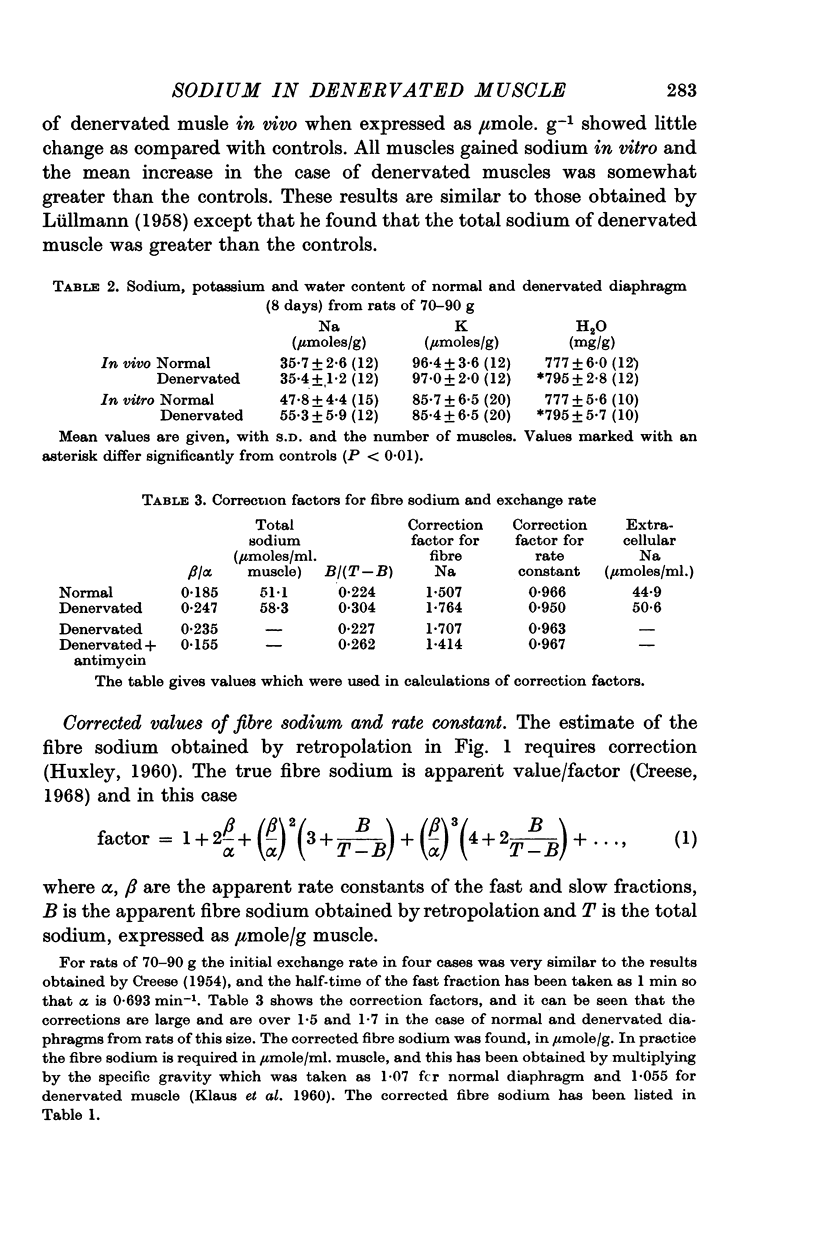
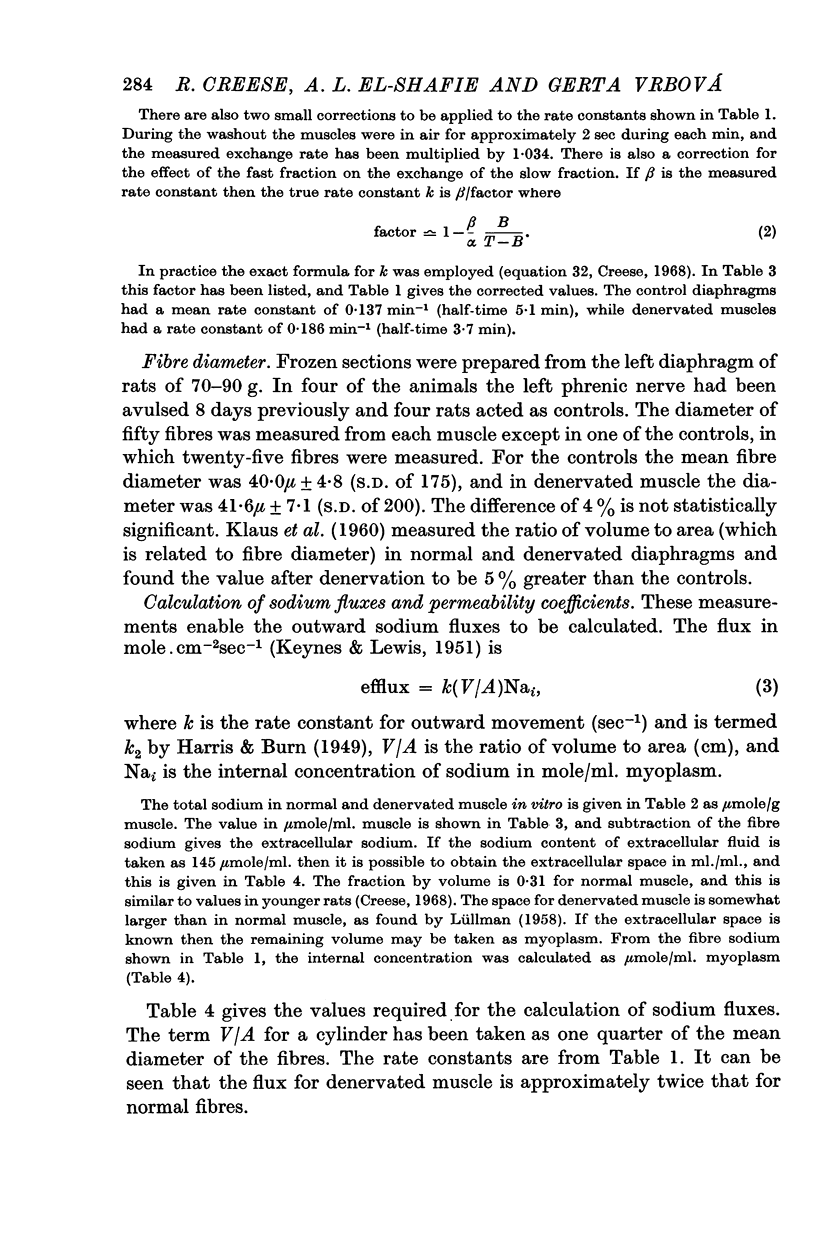
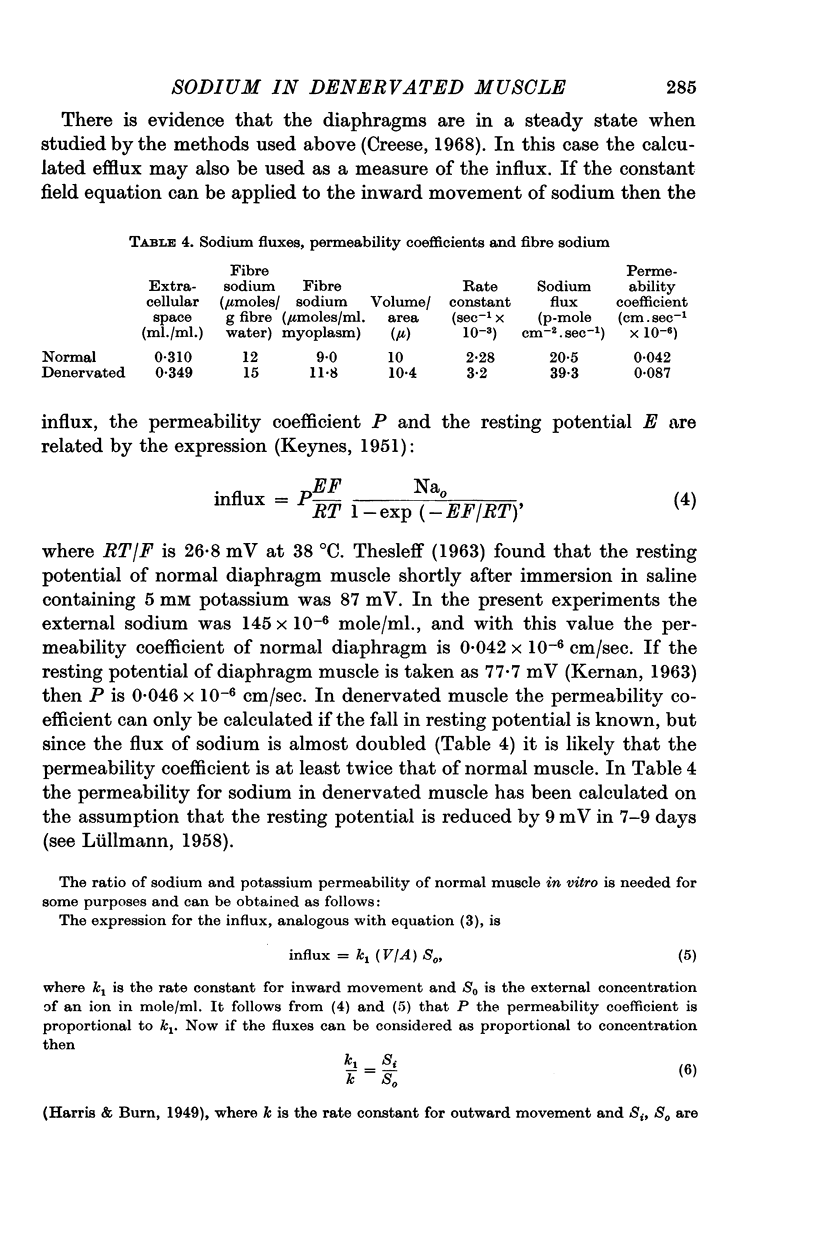
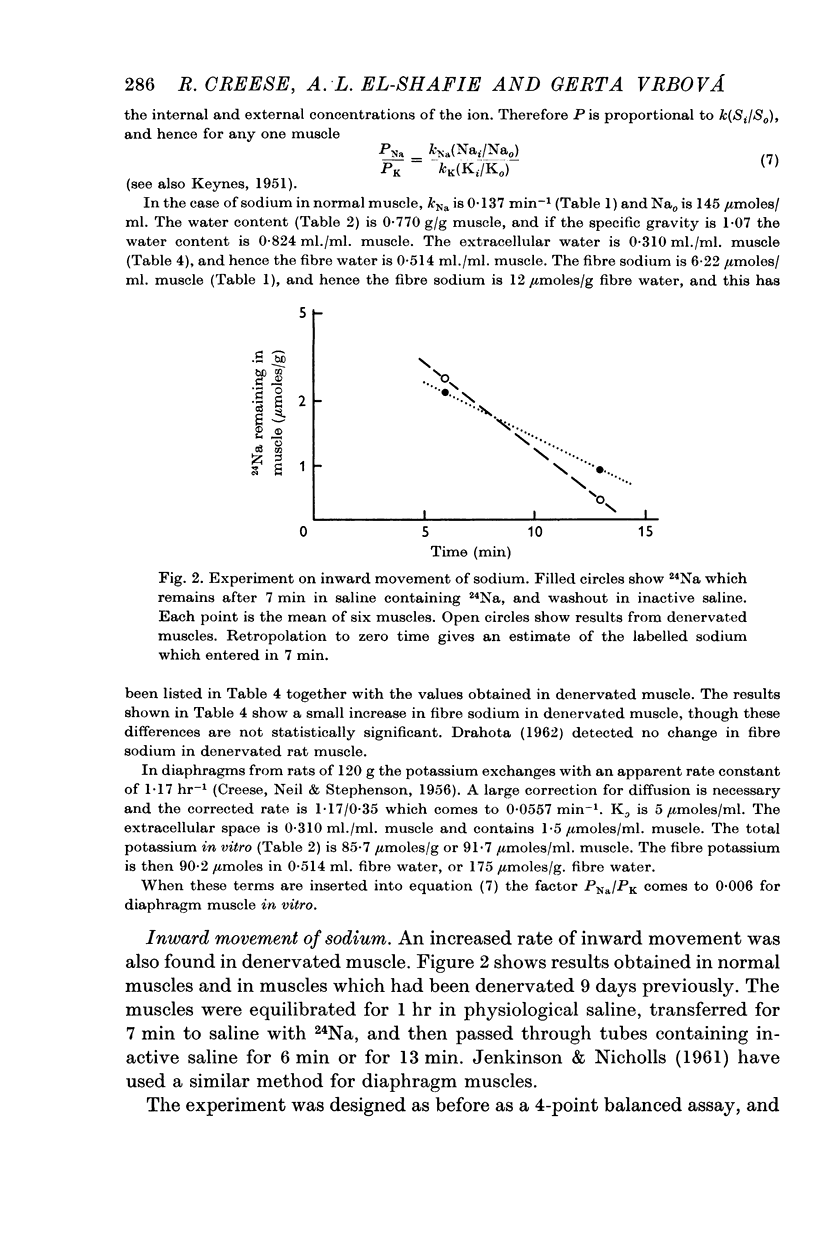
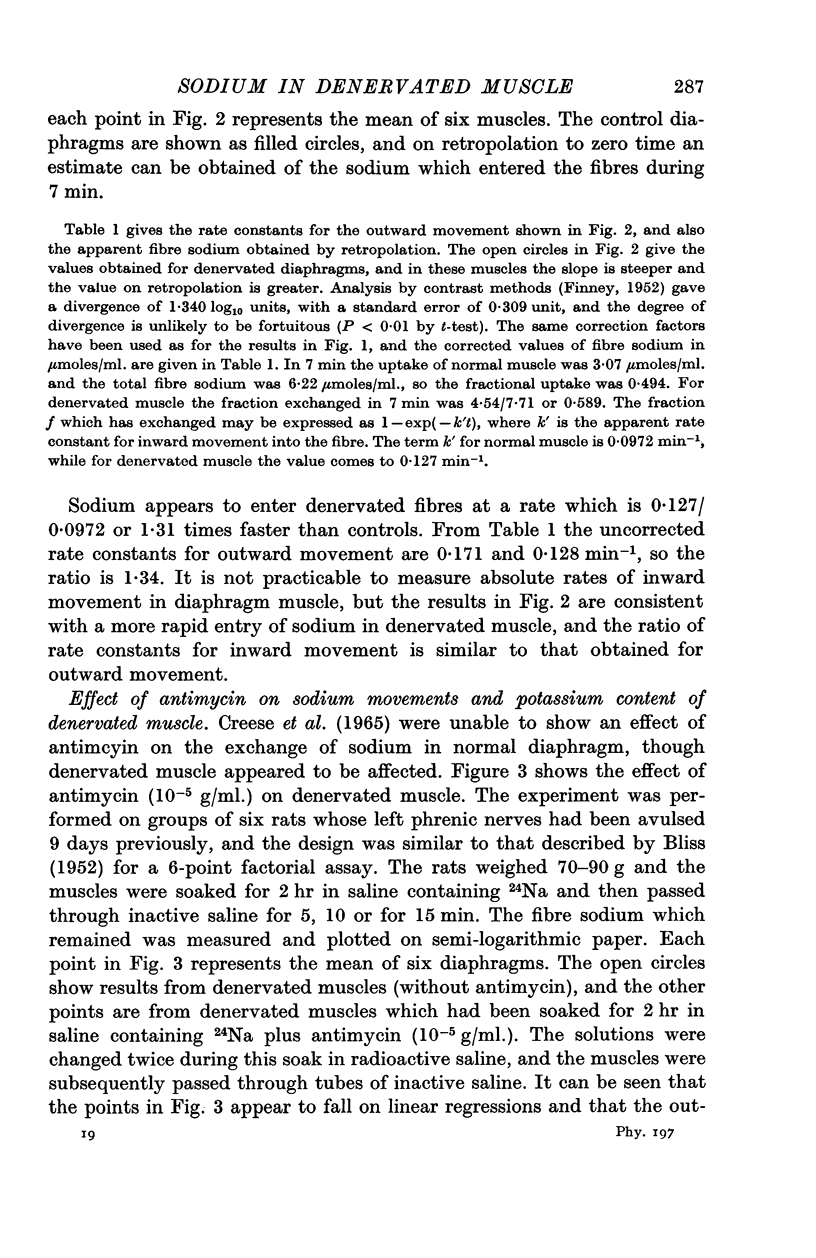
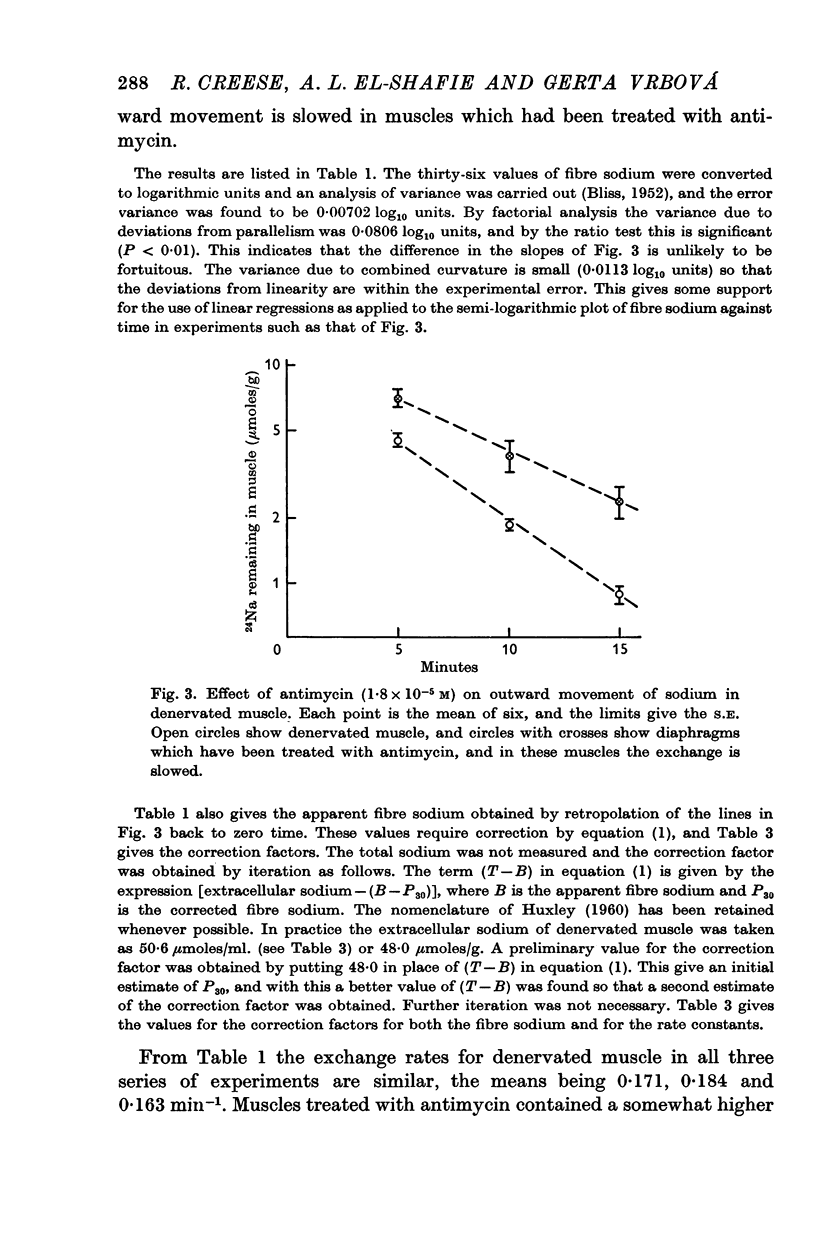
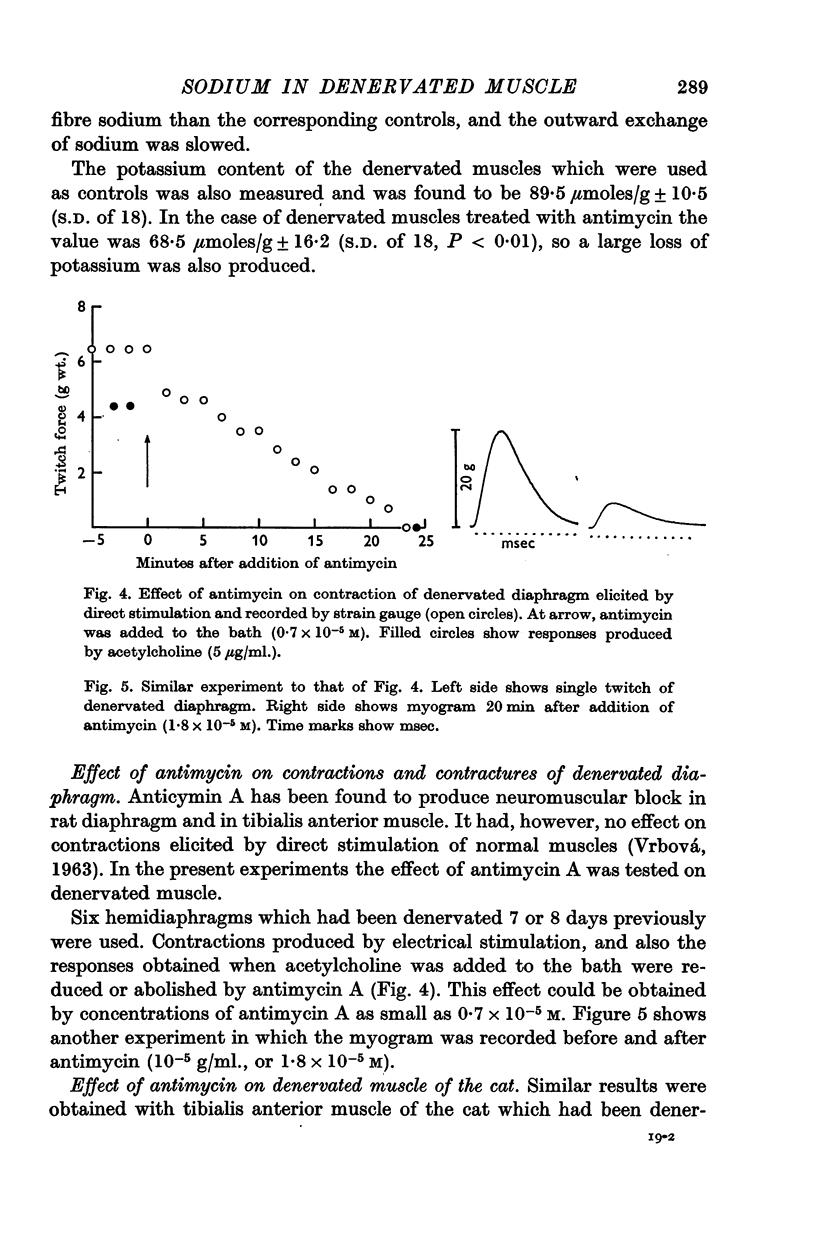
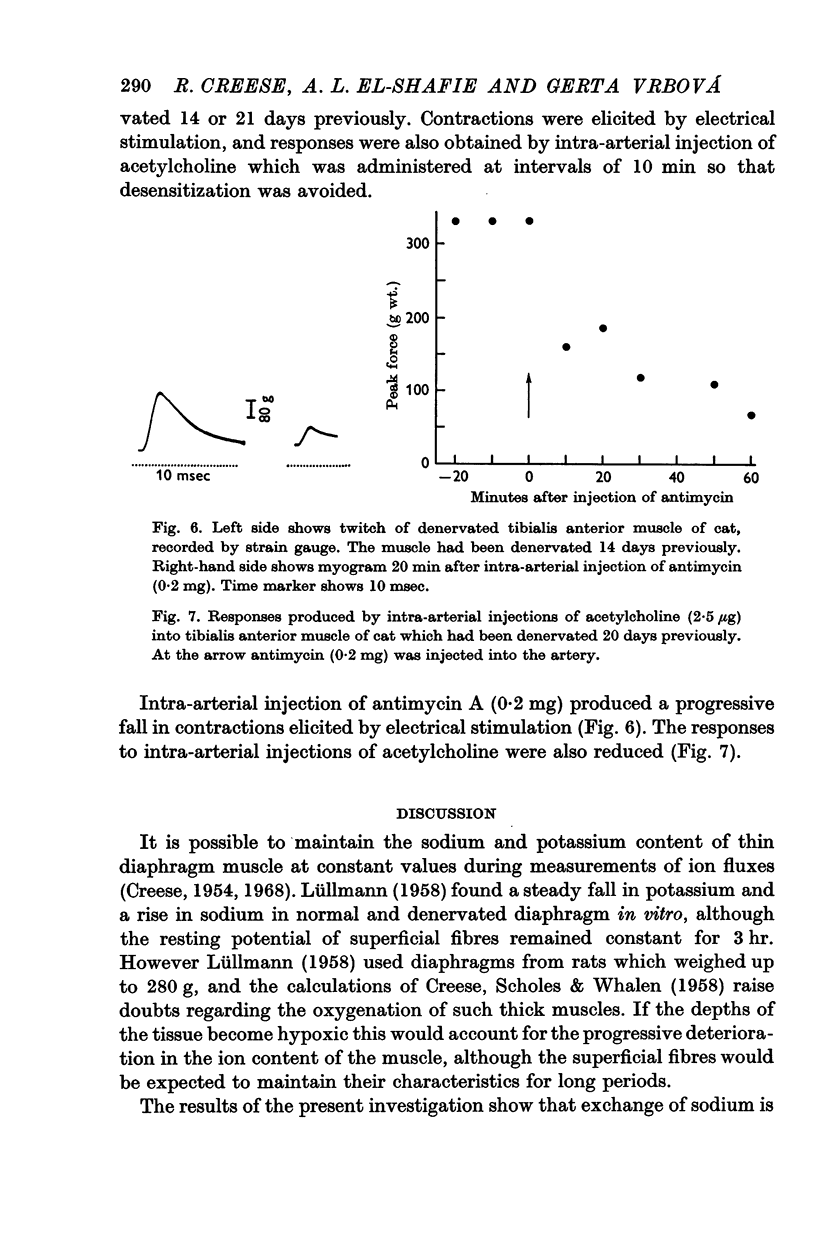
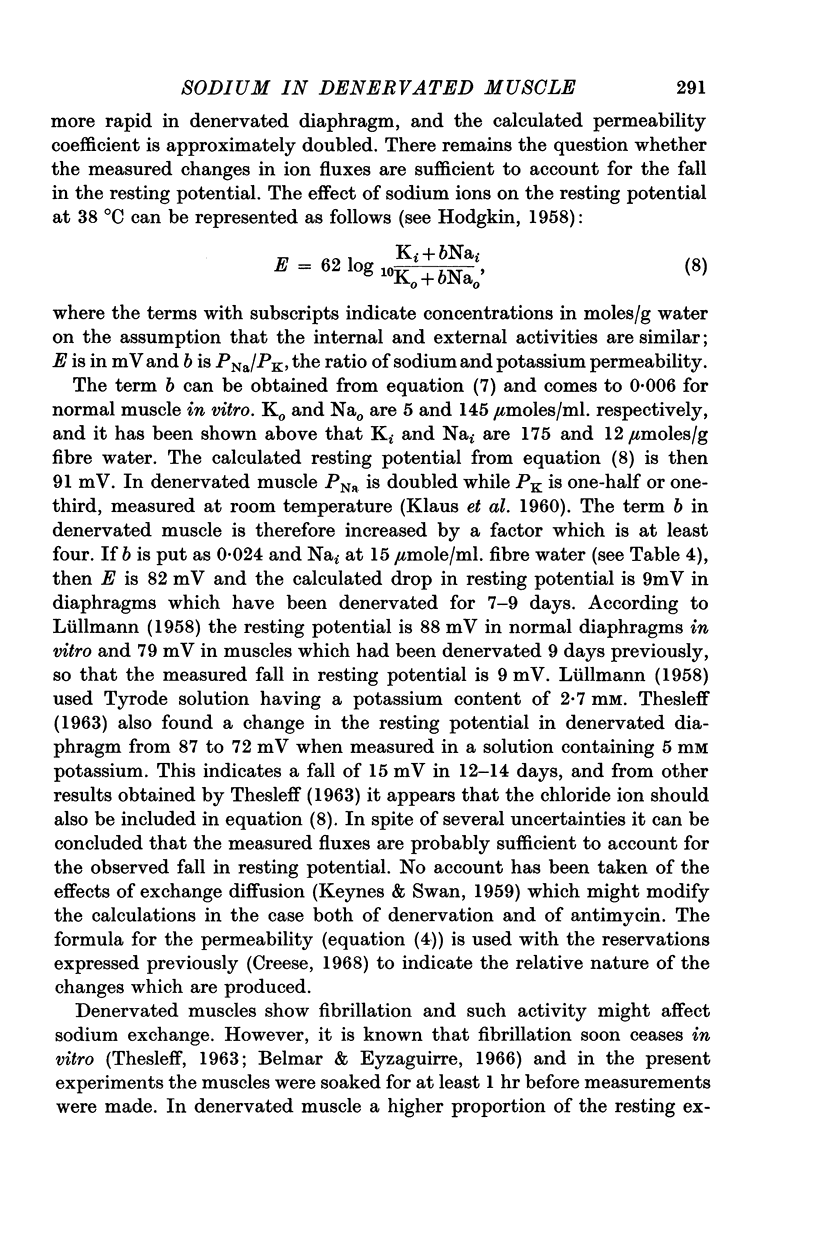
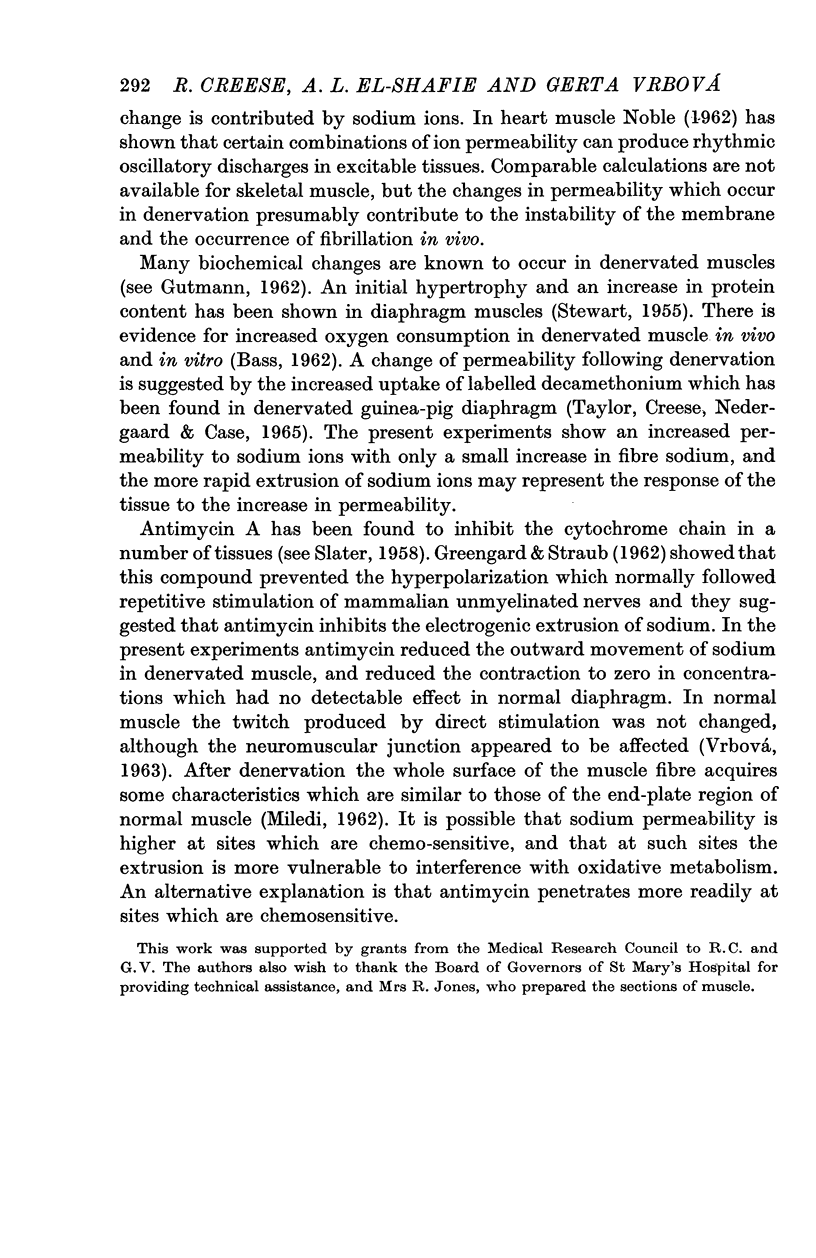
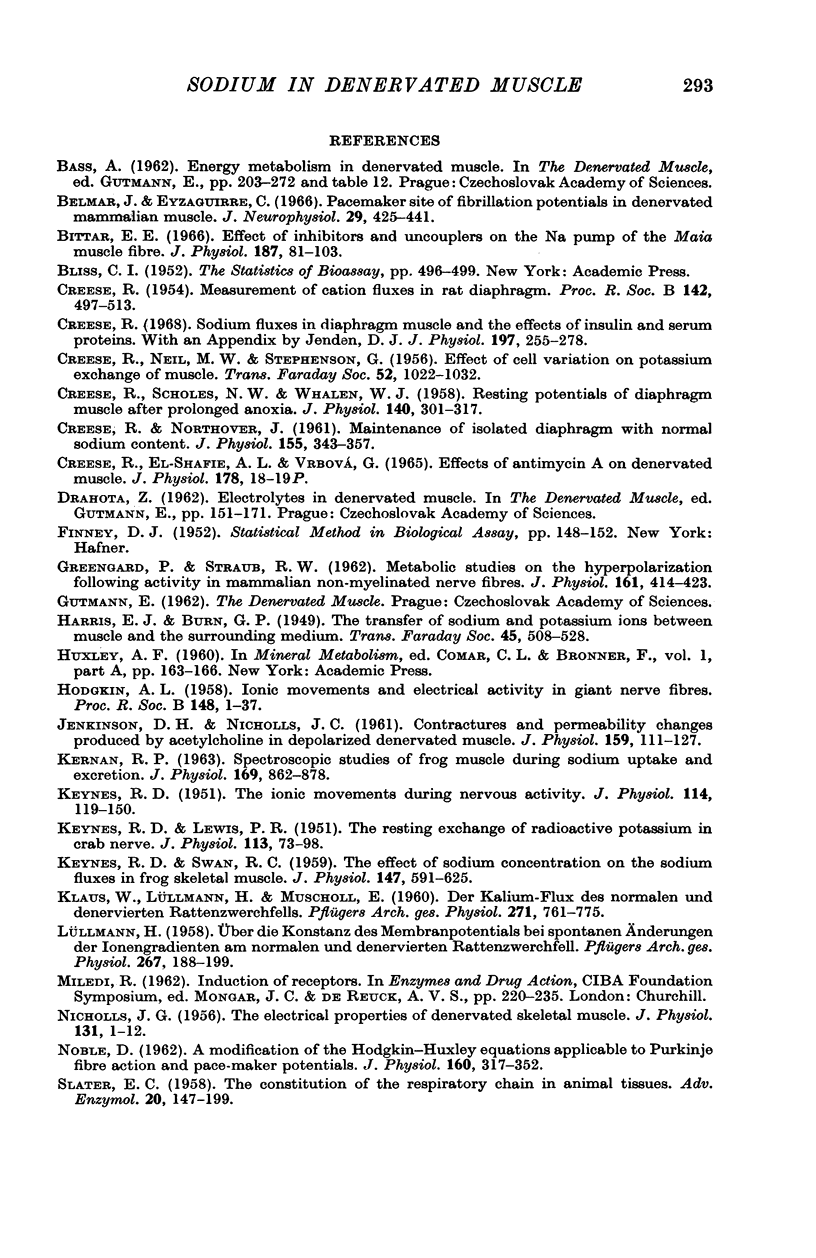
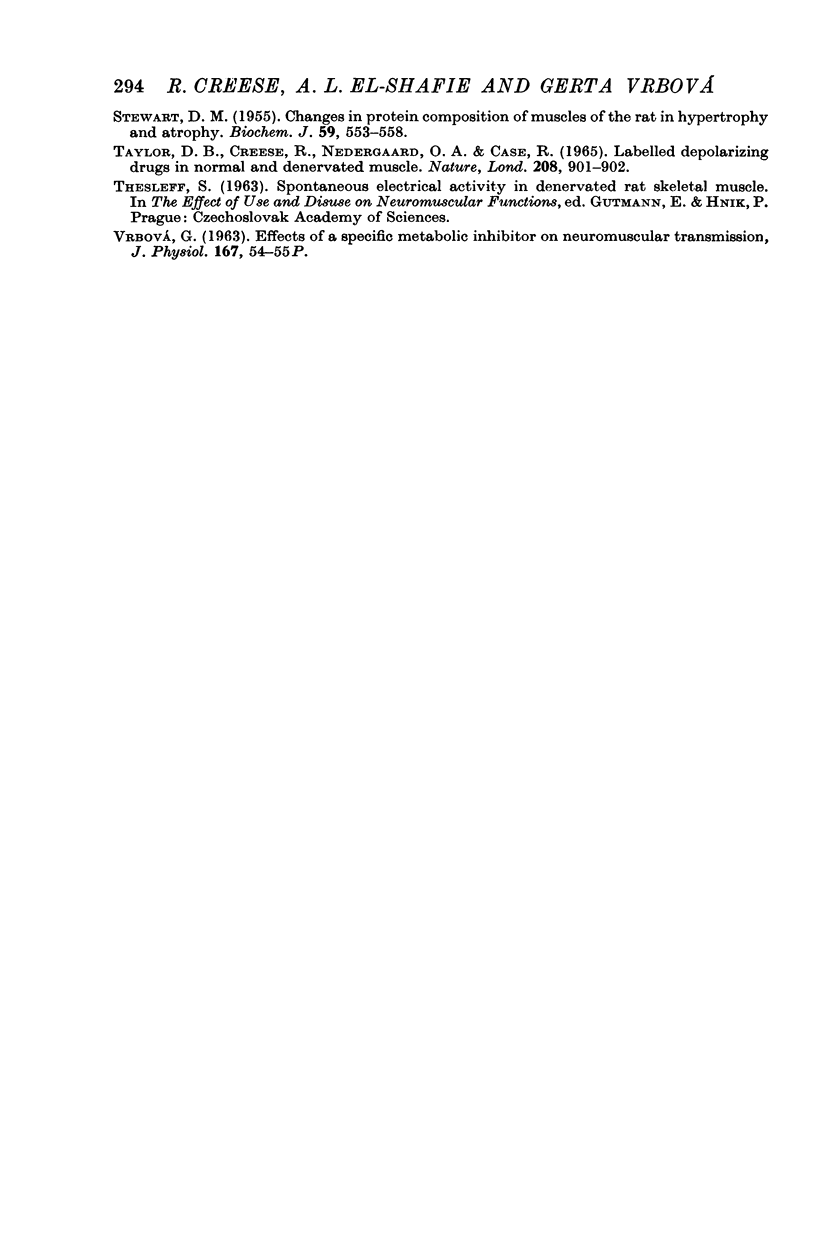
Selected References
These references are in PubMed. This may not be the complete list of references from this article.
- Belmar J., Eyzaguirre C. Pacemaker site of fibrillation potentials in denervated mammmalian muscle. J Neurophysiol. 1966 May;29(3):425–441. doi: 10.1152/jn.1966.29.3.425. [DOI] [PubMed] [Google Scholar]
- Bittar E. E. Effect of inhibitors and uncouplers on the Na pump of the Maia muscle fibre. J Physiol. 1966 Nov;187(1):81–103. doi: 10.1113/jphysiol.1966.sp008077. [DOI] [PMC free article] [PubMed] [Google Scholar]
- CREESE R. Measurement of cation fluxes in rat diaphragm. Proc R Soc Lond B Biol Sci. 1954 Sep 27;142(909):497–513. doi: 10.1098/rspb.1954.0039. [DOI] [PubMed] [Google Scholar]
- CREESE R., NORTHOVER J. Maintenance of isolated diaphragm with normal sodium content. J Physiol. 1961 Feb;155:343–357. doi: 10.1113/jphysiol.1961.sp006632. [DOI] [PMC free article] [PubMed] [Google Scholar]
- CREESE R., SCHOLES N. W., WHALEN W. J. Resting potentials of diaphragm muscle after prolonged anoxia. J Physiol. 1958 Feb 17;140(2):301–317. doi: 10.1113/jphysiol.1958.sp005935. [DOI] [PMC free article] [PubMed] [Google Scholar]
- Creese R. Sodium fluxes in diaphragm muscle and the effects of insulin and serum proteins. J Physiol. 1968 Jul;197(2):255–278. doi: 10.1113/jphysiol.1968.sp008558. [DOI] [PMC free article] [PubMed] [Google Scholar]
- GREENGARD P., STRAUB R. W. Metabolic studies on the hyperpolarization following activity in mammalian non-myelinated nerve fibres. J Physiol. 1962 May;161:414–423. doi: 10.1113/jphysiol.1962.sp006896. [DOI] [PMC free article] [PubMed] [Google Scholar]
- HODGKIN A. L. Ionic movements and electrical activity in giant nerve fibres. Proc R Soc Lond B Biol Sci. 1958 Jan 1;148(930):1–37. doi: 10.1098/rspb.1958.0001. [DOI] [PubMed] [Google Scholar]
- JENKINSON D. H., NICHOLLS J. G. Contractures and permeability changes produced by acetylcholine in depolarized denervated muscle. J Physiol. 1961 Nov;159:111–127. doi: 10.1113/jphysiol.1961.sp006796. [DOI] [PMC free article] [PubMed] [Google Scholar]
- KERNAN R. P. SPECTROSCOPIC STUDIES OF FROG MUSCLE DURING SODIUM UPTAKE AND EXCRETION. J Physiol. 1963 Dec;169:862–878. doi: 10.1113/jphysiol.1963.sp007300. [DOI] [PMC free article] [PubMed] [Google Scholar]
- KEYNES R. D., LEWIS P. R. The resting exchange of radioactive potassium in crab nerve. J Physiol. 1951 Mar;113(1):73–98. doi: 10.1113/jphysiol.1951.sp004557. [DOI] [PMC free article] [PubMed] [Google Scholar]
- KEYNES R. D., SWAN R. C. The effect of external sodium concentration on the sodium fluxes in frog skeletal muscle. J Physiol. 1959 Oct;147:591–625. doi: 10.1113/jphysiol.1959.sp006264. [DOI] [PMC free article] [PubMed] [Google Scholar]
- KEYNES R. D. The ionic movements during nervous activity. J Physiol. 1951 Jun;114(1-2):119–150. doi: 10.1113/jphysiol.1951.sp004608. [DOI] [PMC free article] [PubMed] [Google Scholar]
- KLAUS W., LUELLMANN H., MUSCHOLL E. [Potassium flux of normal and denervated rat diaphragm]. Pflugers Arch Gesamte Physiol Menschen Tiere. 1960;271:761–775. [PubMed] [Google Scholar]
- LULLMANN H. Uber die Konstanz des Membranpotentials bei spontanen Anderungen der Ionengradienten am normalen und denervierten Rattenzwerchfell. Pflugers Arch. 1958;267(2):188–189. doi: 10.1007/BF00362985. [DOI] [PubMed] [Google Scholar]
- NICHOLLS J. G. The electrical properties of denervated skeletal muscle. J Physiol. 1956 Jan 27;131(1):1–12. doi: 10.1113/jphysiol.1956.sp005440. [DOI] [PMC free article] [PubMed] [Google Scholar]
- NOBLE D. A modification of the Hodgkin--Huxley equations applicable to Purkinje fibre action and pace-maker potentials. J Physiol. 1962 Feb;160:317–352. doi: 10.1113/jphysiol.1962.sp006849. [DOI] [PMC free article] [PubMed] [Google Scholar]
- SLATER E. C. The constitution of the respiratory chain in animal tissues. Adv Enzymol Relat Subj Biochem. 1958;20:147–199. doi: 10.1002/9780470122655.ch6. [DOI] [PubMed] [Google Scholar]
- STEWART D. M. Changes in the protein composition of muscles of the rat in hypertrophy and atrophy. Biochem J. 1955 Apr;59(4):553–558. doi: 10.1042/bj0590553. [DOI] [PMC free article] [PubMed] [Google Scholar]
- Taylor D. B., Creese R., Nedergaard O. A., Case R. Labelled depolarizing drugs in normal and denervated muscle. Nature. 1965 Nov 27;208(5013):901–902. doi: 10.1038/208901a0. [DOI] [PubMed] [Google Scholar]


